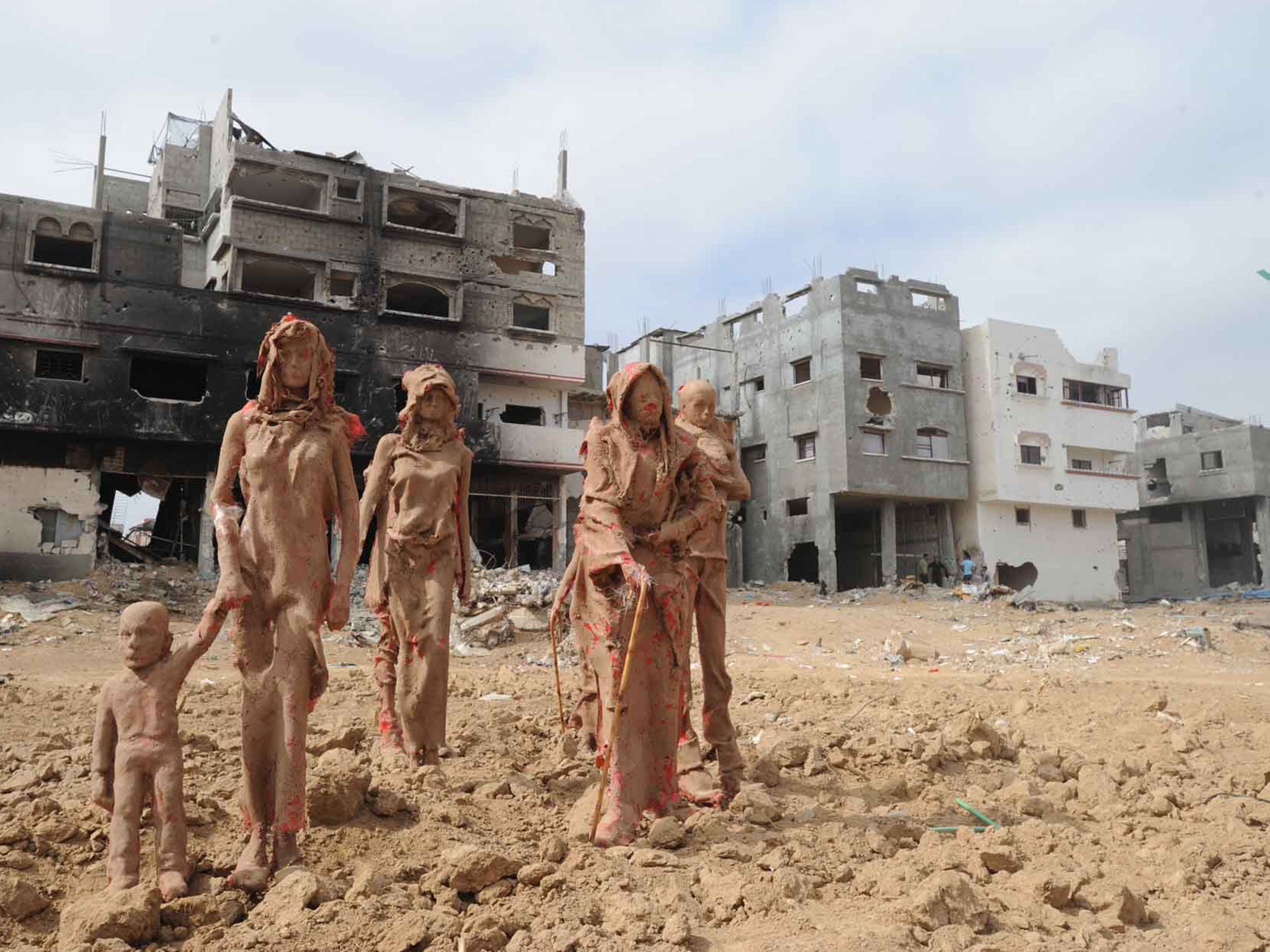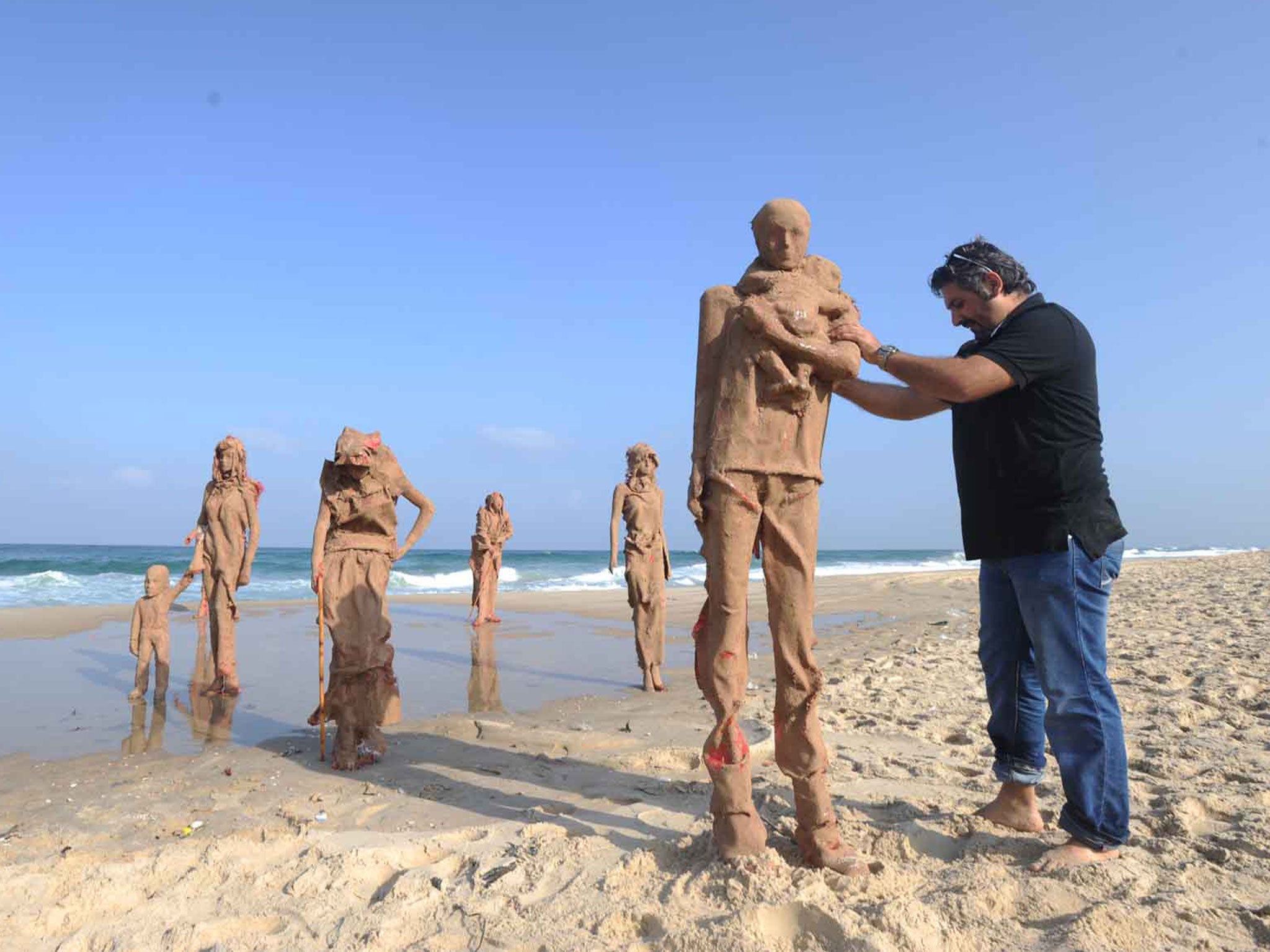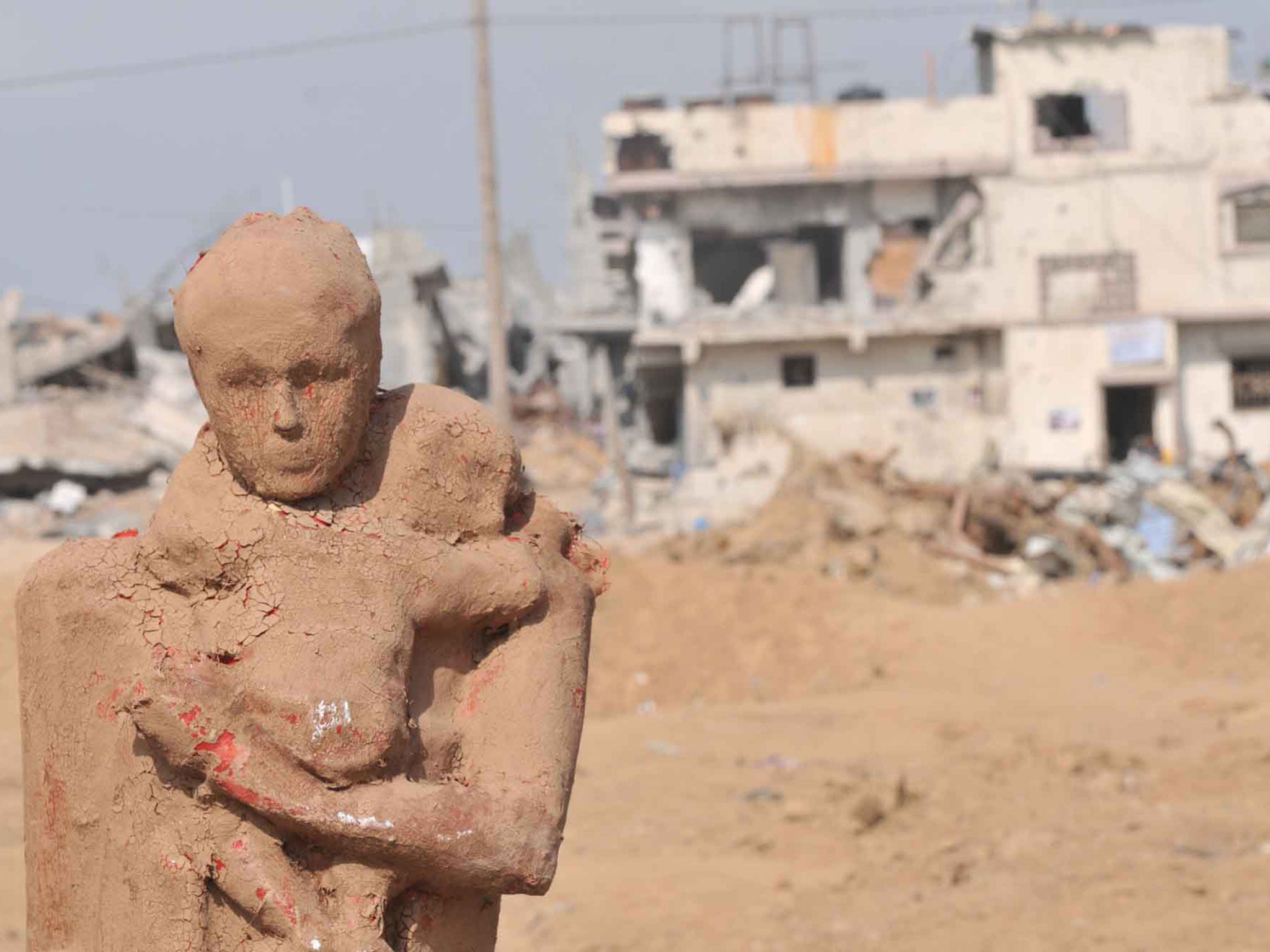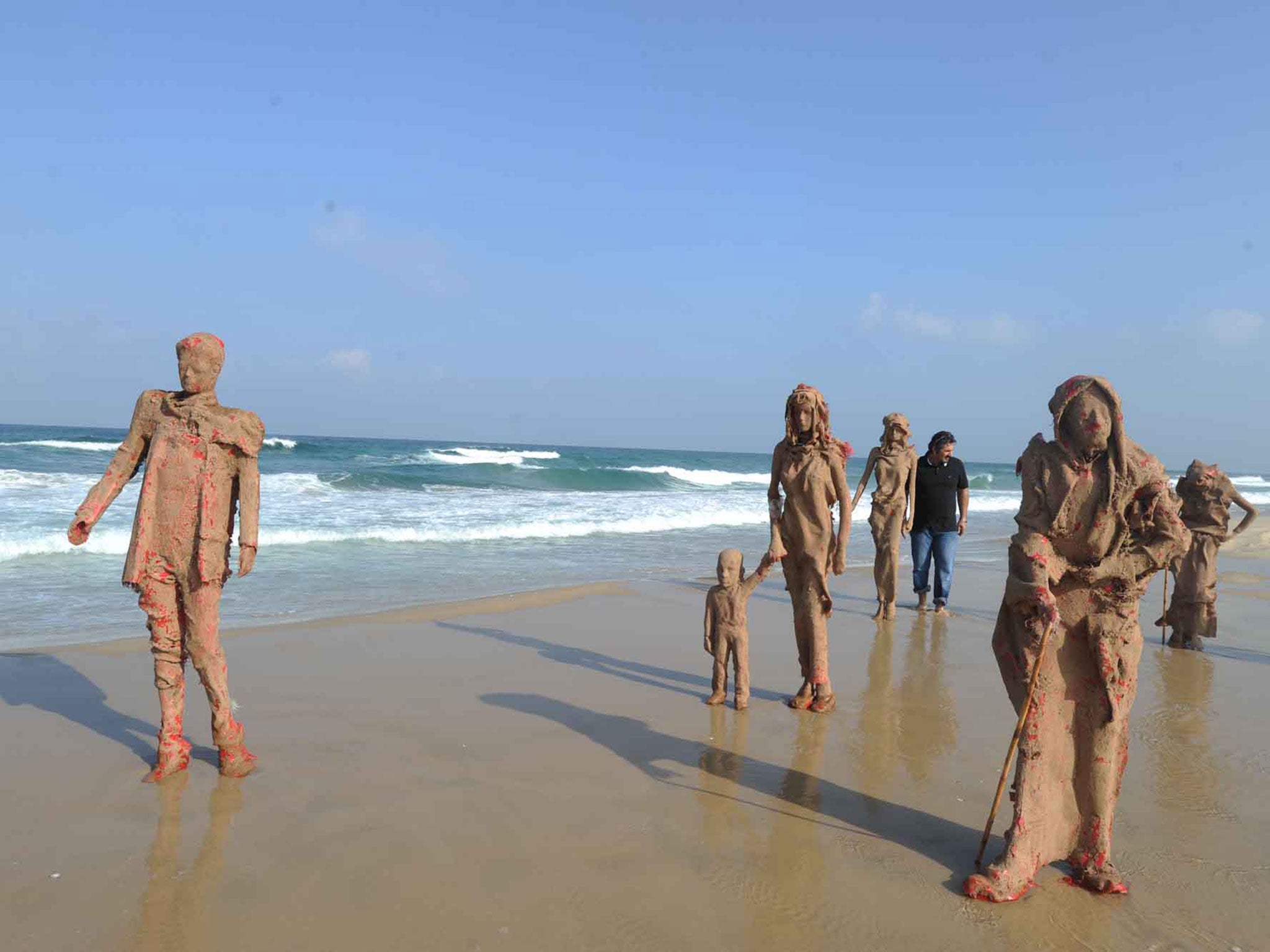Bloodied and crumbling sculptures installed in destroyed Gaza neighbourhood
Artist Iyad Sabbah wanted to show the pain of the recent war

Your support helps us to tell the story
From reproductive rights to climate change to Big Tech, The Independent is on the ground when the story is developing. Whether it's investigating the financials of Elon Musk's pro-Trump PAC or producing our latest documentary, 'The A Word', which shines a light on the American women fighting for reproductive rights, we know how important it is to parse out the facts from the messaging.
At such a critical moment in US history, we need reporters on the ground. Your donation allows us to keep sending journalists to speak to both sides of the story.
The Independent is trusted by Americans across the entire political spectrum. And unlike many other quality news outlets, we choose not to lock Americans out of our reporting and analysis with paywalls. We believe quality journalism should be available to everyone, paid for by those who can afford it.
Your support makes all the difference.Broken, crumbling and splattered with “blood”, these haunting sculptures have been made by an artist in Gaza to show the pain of conflict.
The 50-day war between Israel and Hamas earlier this year left more than 2,200 people dead and razed thousands of homes in the narrow strip to the ground.
Most of the casualties were civilians, including hundreds of children, according to the UN, reflected in artist Iyad Sabbah’s depiction of a family.
The sculptor, who is Palestinian and lives and works in Gaza, created them using mud and waste materials found in bombsites.
In an installation entitled Worn Out, the family of sculptures including a small child and a baby appear to move through debris and rubble and past shelled homes.

“Shuja’iyya neighborhood is one of the places that was completely destroyed, and the idea came to my head to do something about the war, to focus on displacement of the Palestinians,” he told the Cairo Post.
“The displacement scene is very influential, so the sculptures were put amid the wreckage of the destroyed houses in Shuja’iyya to show the suffering of the residents.”

They were also placed on a beach to symbolise the refugees fleeing to other countries illegally in a desperate attempt to escape the conflict.
Mr Sabbah, who lived through the most recent conflict in Gaza as well as violence in 2012 and 2008, said he wanted to represent the “psychological impact” of war and commemorate those who died.

“There has been a violation of humanity in all of the Gaza community as a result of the aggression,” he told The Independent, adding that the response to his work has been “positive”.
Mr Sabbah holds degrees from Fateh University in Libya, Helwan University in Cairo and lectures at Aqsa University in Gaza.
Reconstruction work is continuing in the coastal enclave and hundreds of millions of pounds has been pledged in international aid to repair its damaged infrastructure.
Join our commenting forum
Join thought-provoking conversations, follow other Independent readers and see their replies
Comments